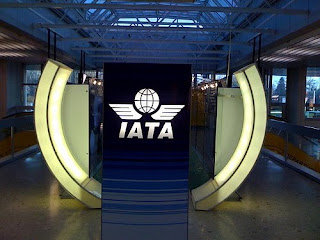The International Air Transport Association (IATA) said that, not surprisingly, the Iceland volcano eruption that shut down European skies for six days hurt passenger traffic in April. IATA announced international scheduled air traffic results for April, saying that passenger demand slumped by 2.4 percent as a result of massive flight cancellations centered in Europe during the six days in April following the eruptions of an Icelandic volcano.
The fall in traffic interrupted the industry’s recovery from the global financial crisis.
“The ash crisis knocked back the global recovery -- impacting carriers in all regions. Last month, we were within 1 percent of pre-crisis traffic levels in 2008. In April, that was pushed back to 7 percent,” said Giovanni Bisignani, IATA’s director general and CEO. “European carriers bore the worst of the volcano’s impact. Their 11.7 percent drop in passenger traffic could not have come at a worse time."
The April drop in demand in Europe can be attributed to both the flight cancellations (two-thirds of the total decline) and follow-on cancellations due to uncertainty of the availability of air travel (one-third). Early indications for May show a rebound in travel from the disrupted levels in April. The scale of the ash crisis saw global load factors drop to 76.9 percent from the 78.0 percent recorded in March. Freight load factors also dipped to 55.3 percent from the 57.1 percent recorded in the previous month. While March traffic was within 1 percent of pre-crisis levels for both passenger and cargo, this slipped to 7 percent for passenger and 3 percent for cargo in April.
European carriers posted an 11.7 percent demand drop in April (compared to a 6.2 percent increase in March). Uncertainty of service reliability in the aftermath of the ash cancellations and major unrest in Greece as a result of the currency crisis added to the weaker European demand during the month. Limited GDP growth expectations of 0.9 percent continue to dampen demand across the continent.
North American carriers posted a 1.9 percent decline in demand, primarily as a result of the impact of the ash crisis on North Atlantic routes. This is a major step backwards from the 7.8 percent growth recorded in March. This fall in demand was less than half the 4.5 percent cut in capacity, pushing load factors to 80.2 percent. Asia-Pacific carriers saw their strong growth slow to 3.5 percent (from the 12.9 percent growth recorded in March). Robust GDP growth of 7 percent (Asia excluding Japan) is supporting the strong recovery.
Middle Eastern airlines recorded the strongest traffic growth at 13.0 percent, which is about half the 25.9 percent increase of the previous month. African carriers also saw their recovery slow to 8.6 percent growth in April, down from the 16.9 percent growth recorded during the previous month. Latin American carriers posted a 1.2 percent increase for the month, a quarter of the 4.6 percent growth recorded in March, which was already a weak month as a result of the Chilean earthquake. For more information, visit www.iata.org.
Source travelpulse.com



.jpg)








0 comments:
Post a Comment